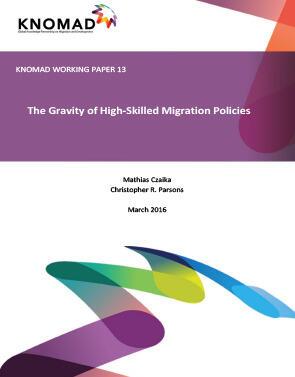
The Gravity of High-Skilled Migration Policies
Despite the almost ubiquitously held belief among policy makers that immigration policies aimed at attracting high-skilled workers meet their desired aims, academics continue to debate their efficacy. This paper presents the first judicious assessment of the effectiveness of such policies. We combine a unique new data set of annual bilateral high-skilled immigration labor flows for 10 Organisation for Economic Co-operation and Development destinations between 2000 and 2012 with new databases comprising both unilateral and bilateral policy instruments to examine which types and combinations of policies are most effective in attracting and selecting high-skilled workers using a micro-founded gravity framework. Points-based systems are much more effective in attracting and selecting highskilled migrants than requiring a job offer, labor market tests, or shortage-listed occupations. Financial incentives yield better outcomes in “demand-driven” systems, which require a job offer, than when combined with points-based systems, however. Offers of permanent residency, while attracting the highly skilled, overall reduce the human capital content of labor flows because they prove more attractive to non-high-skilled workers. Bilateral recognition of diploma and social security agreements foster greater flows of high-skilled workers and improve the skill selectivity of immigrant flows. Conversely, double taxation agreements deter high-skilled migrants, although they do not alter overall skill selectivity. Higher wages for skilled workers increase the number and skill selectivity of labor flows, whereas higher levels of unemployment exert the opposite effects. Migrant networks, contiguous borders, common language, and freedom of movement, while encouraging greater numbers of high-skilled workers, exert greater effects on non-high-skilled workers, thereby reducing the skill content of labor flows. Greater geographic distances, however, while deterring both types of workers, affect the high skilled less, thereby improving the selection of skills. Our results are robust to a variety of empirical specifications that account for destination-specific amenities, multilateral resistance to migration, and the endogeneity of immigration policies.

